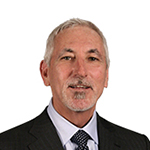By the time you notice America's doctor shortage, it will be too late.
That's the ominous tagline of a campaign by the Association of American Medical Colleges, which is lobbying Congress for increased graduate medical education funding. The association predicts a national shortage of 90,000 physicians by 2020 — half of them in primary care.
The scary part is, people are already starting to notice.
According to a recent study by the University of California, San Francisco, the number of ED visits in California rose by 13.2 percent between 2005 and 2010.
This in itself is a dramatic finding. But what's most interesting is not how many came to the ED, but who. Patients covered by Medi-Cal, the California version of Medicaid, increased their ED utilization by a whopping 35 percent during the study period.
So why are Medi-Cal patients flocking to the ED, where they'll likely pay more for their care? Couldn't their problems be handled more effectively by their family doctor?
Yes. If they had one.
Unfortunately, the idea of improving access to care got a bit lost in the healthcare reform movement. Instead, most of the changes went toward expanding coverage and regulating the insurance industry.
Certainly it's a positive step that’s ended oppressive practices like excluding pre-existing conditions or dropping very sick patients from the plan. But expanded coverage isn't all that useful if people can't see a doctor when they need to.
Let's take a closer look at Medi-Cal patients, a group whose numbers are set to swell by up to 1.4 million by 2019. By any standards, they're woefully underinsured. As any primary care physician in California will attest, caring for Medi-Cal patients is an economically marginal enterprise at best.
A Medi-Cal provider interviewed recently by Modern Physician estimated that the program reimbursed her $18 to $24 a visit. I'm guessing that at those rates, she'd have to see a patient every few minutes to cover her malpractice insurance, overhead and other expenses. That's hardly conducive to safe, high-quality care.
It's no surprise that Medicaid patients can't find doctors who can afford to care for them. So what becomes their de facto medical home? Their friendly neighborhood emergency department.
Incidentally, our politicians don't always see a problem with this:
"I mean, people have access to healthcare in America. After all, you just go to an emergency room."
— George W. Bush, 2007
Now it's true that the ED is actually a relatively cost-effective source of care. On an incremental basis, one additional patient seeking treatment for an ear infection or feverish baby doesn't cost the hospital much. The lights are already on, and the doctors are already there.
However, ED volumes are already at a critical point in many parts of the country. We're struggling to maintain efficiency. A further influx of patients would impact every patient we see in the form of decreased quality and safety.
So how do we increase access to achieve meaningful reform? Policymakers have offered some temporary fixes that could be extended into permanent solutions.
One such measure is the "bump" rule that reimburses primary care providers and related specialists who see Medicaid patients at Medicare rates. The program is currently funded through 2015. Extending it would go a long way toward improving primary care access for Medicaid patients across the country — and easing some of the pressure on EDs.
Then there's the issue of our physician workforce. Medical schools have done a great job of increasing enrollments. However, the number of Medicare-funded residency programs has been capped since 1997. The sooner Congress lifts this freeze, the sooner we can train physicians in sufficient numbers to meet our needs.
We also need to attract physicians to primary care. A recent study at George Washington University found that two-thirds of federal residency funding goes to sites with a poor track record for producing primary care doctors.
Of course, this needs to change. But we also need to extend provisions like the "bump" rule to make it economically feasible for new graduates to care for our poorest, most vulnerable patients.
Finally, we need to expand access to primary care services at the local level. Many rural clinics receive federal funding that helps them accommodate Medicaid patients, but such programs cover only a small percentage of the US population. In urban areas, this may need to happen on a city-by-city or county-by-county basis.
So how important is access? I really believe it's the crux of the healthcare reform. We've done some really positive things to expand coverage. Now we need to ensure that there will be physicians available to care for the newly insured population.






















